pH Value Affects Ammonium Paratungstate Crystal
- Details
- Category: Tungsten Information
- Published on Thursday, 31 December 2015 18:08
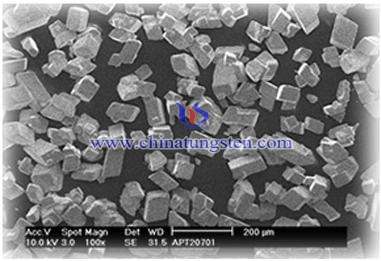 pH value affects average particle size and particle of ammonium paratungstate crystal; also the nucleation rate and the crystal growth rate are obviously influenced by pH value. The hydrogen ion concentration index is the ratio of the total amount and the total amount of the hydrogen ion in the solution, which is commonly called "pH", value of the acidity or alkalinity of the solution, that is, the negative value of common logarithm of the hydrogen ion concentration.When the pH of solution equals to 9, adding HCL solution concentration of 1% will cause the pH decreased, and crystallization rate of APT decreased afterwards. Set experiment conditions bellows: 60℃ water bath reaction, exposure to stir. It resulted that solution produced milk white precipitate when the PH>8 and disappeared immediately after stirring; but precipitation difficult to disappear even stirring when PH<8.
pH value affects average particle size and particle of ammonium paratungstate crystal; also the nucleation rate and the crystal growth rate are obviously influenced by pH value. The hydrogen ion concentration index is the ratio of the total amount and the total amount of the hydrogen ion in the solution, which is commonly called "pH", value of the acidity or alkalinity of the solution, that is, the negative value of common logarithm of the hydrogen ion concentration.When the pH of solution equals to 9, adding HCL solution concentration of 1% will cause the pH decreased, and crystallization rate of APT decreased afterwards. Set experiment conditions bellows: 60℃ water bath reaction, exposure to stir. It resulted that solution produced milk white precipitate when the PH>8 and disappeared immediately after stirring; but precipitation difficult to disappear even stirring when PH<8.| APT Supplier: Chinatungsten Online ammonium-metatungstate.com | Tel.: 86 592 5129696; Fax: 86 592 5129797;Email:sales@chinatungsten.com |
| Tungsten News&Tungsten Prices, 3G Version: http://3g.chinatungsten.com | Molybdenum News & Molybdenum Price: http://news.molybdenum.com.cn |
Temperature Affects Ammonium Paratungstate Nucleation and Crystallization Growth
- Details
- Category: Tungsten Information
- Published on Thursday, 31 December 2015 18:04
 Temperature of solution has an influence on ammonium paratungstate (APT) crystallization. Above room temperature, with the temperature increasing, APT crystal experience 5 steps: acicular→thin strips→schistose→cuboids→solid. The size of APT grain also gradually changes from few microns to 40~60μm. Temperature raises lead to the morphology and structure of APT crystal changing and crystal coarsened.
Temperature of solution has an influence on ammonium paratungstate (APT) crystallization. Above room temperature, with the temperature increasing, APT crystal experience 5 steps: acicular→thin strips→schistose→cuboids→solid. The size of APT grain also gradually changes from few microns to 40~60μm. Temperature raises lead to the morphology and structure of APT crystal changing and crystal coarsened.| APT Supplier: Chinatungsten Online ammonium-metatungstate.com | Tel.: 86 592 5129696; Fax: 86 592 5129797;Email:sales@chinatungsten.com |
| Tungsten News&Tungsten Prices, 3G Version: http://3g.chinatungsten.com | Molybdenum News & Molybdenum Price: http://news.molybdenum.com.cn |
Tungsten Alloy FDG Shielding Container
- Details
- Category: Tungsten Information
- Published on Thursday, 31 December 2015 17:44
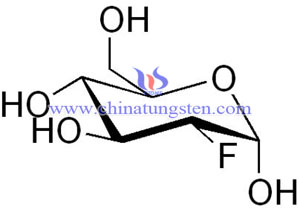
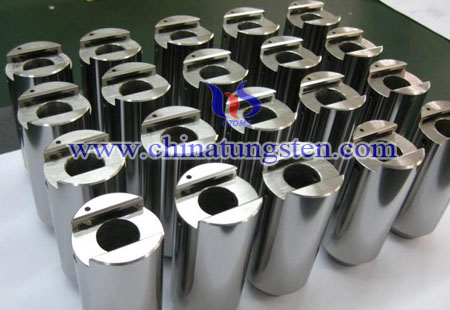
| Tungsten Gold Plated Supplier: Chinatungsten Online www.tungsten-alloy.com | Tel.: 86 592 5129696; Fax: 86 592 5129797;Email:sales@chinatungsten.com |
| Tungsten News & Prices, 3G Version: http://3g.chinatungsten.com | Molybdenum News & Molybdenum Price: http://news.molybdenum.com.cn |
Pyrochlore Tungsten Trioxide Preparation
- Details
- Category: Tungsten Information
- Published on Thursday, 31 December 2015 17:41
Pyrochlore tungsten trioxide (WO3 • 0.5H2O) WO6 makes distorted octahedral as structural motifs, building a layered structure with pore ring by a rigid skeleton top corner WO.It can be used as intermediates in the preparation of tungsten oxide, hopefully reducing tungsten process, achieve lye circulation because of its molecular sieve having mesh structure and referral stability in materials science with a wide range of applications in the tungsten smelting field. Currently, preparing pyrochlore tungsten oxide by hydrothermal has been able to guarantee a certain response rate, but hot water containing sodium tungstate architecture is more complex, limiting the application of the law. Therefore, how to strengthen and optimize the hydrothermal reaction process to prepare pyrochlore tungsten oxide, which is very important to achieve industrialization.
In view of the WO3-soluble sodium tungstate solution, change the hydrothermal system plays the role of pH value, the paper choose tungsten trioxide as additive preparation pyrochlore type oxide, tungsten, and supplemented by carbon dioxide, sodium tungstate solution of oxalic acid pretreatment, in detail study the morphology and response rate solution resulting product under different conditions, the reaction of the various factors affecting the process are analyzed. According to the experimental data, and IR spectrum analysis tools, the reaction mechanism was discussed Hydrothermal pyrochlore type tungsten trioxide.
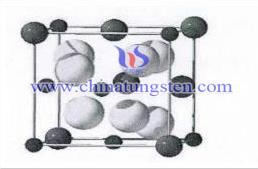 Experiment indicates:
Experiment indicates:
(1) We use tungsten trioxide alone as an additive to stabilize the pH of the hydrothermal system and gain pyrochlore trioxide products, which shows the reaction rate can reach 80%. And we choose oxalic acid, CO2 to deal with Sodium tungstate , which helps to change the reaction rate, and the reaction time from more than 24h shortened to less than 8h.
(2) It is also capable of producing tungsten trioxide pyrochlore trioxide products in the pH ranges 3.5 to 8.9.
(3) The products obtained have good cubic structure, the average particle size of the particles are about 1μm by XRD, SEM analysis and other means of detection,
(4) We wash with a small amount of diluted hydrochloric acid Na element because of the product is easy to carry elements Na.
(5) The Experiment shows the use of infrared detectors is to prepare the preliminary view W2O72- pyrochlore tungsten oxide growth unit.
| Tungsten Oxide Supplier: Chinatungsten Online www.tungsten-oxide.com | Tel.: 86 592 5129696; Fax: 86 592 5129797;Email:sales@chinatungsten.com |
| Tungsten News & Prices, 3G Version: http://3g.chinatungsten.com | Molybdenum News & Molybdenum Price: http://news.molybdenum.com.cn |
Differences Between Tungsten Gold-plated and Gold
- Details
- Category: Tungsten Information
- Published on Thursday, 31 December 2015 17:40

| Tungsten Gold Plated Supplier: Chinatungsten Online www.tungsten-alloy.com | Tel.: 86 592 5129696; Fax: 86 592 5129797;Email:sales@chinatungsten.com |
| Tungsten News & Prices, 3G Version: http://3g.chinatungsten.com | Molybdenum News & Molybdenum Price: http://news.molybdenum.com.cn |
Gold and Tungsten Gold-plated Introduction
- Details
- Category: Tungsten Information
- Published on Thursday, 31 December 2015 17:37
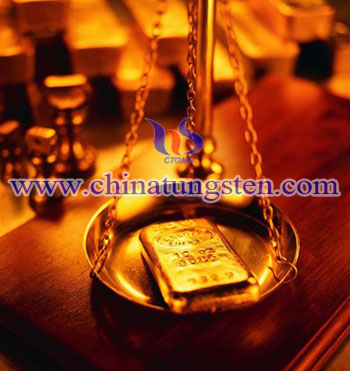

| Tungsten Gold Plated Supplier: Chinatungsten Online www.tungsten-alloy.com | Tel.: 86 592 5129696; Fax: 86 592 5129797;Email:sales@chinatungsten.com |
| Tungsten News & Prices, 3G Version: http://3g.chinatungsten.com | Molybdenum News & Molybdenum Price: http://news.molybdenum.com.cn |
Mesoporous Tungsten Trioxide Application
- Details
- Category: Tungsten Information
- Published on Thursday, 31 December 2015 17:36
Applications In The Field Of Catalysts
Mesoporous molecular sieve has a high specific surface area , pore structure and orderly rules, which is an excellent catalyst carrier. Solid heteropolyacid is a new type of catalytic materials with properties superacids; it is not only friendly to environment, but also possesses the advantages of high activity. In practice, it can be supported on a suitable carrier. Mesoporous materials is larger pore diameter which is good for acid anion achieves sufficiently into the role and plays the role of dispersion The tungsten trioxide (wo3) supported on niobium oxide (Nb2O5) and alumina (Al2O3), the availability of tungsten trioxide in the niobium oxide has better dispersibility. It is more likely to be restored for tungsten trioxide with solid solution. Compared with wo3 / Al2O3 catalyst, the reactions have higher activity because wo3 / Nb2O5 oxidation .
Applications In The Field Of Adsorption
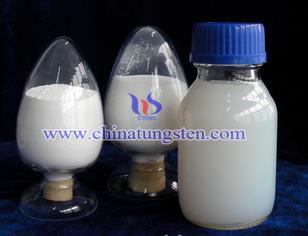 Mesoporous materials have a unique application in the field of separation and adsorption. It not only has a high adsorption capacity to nitrogen, but also can recycle all kinds of volatile organic compounds and other heavy metals. The synthesis materials of hexagonal mesoporous can absorb elements in nuclear waste, which can achieve better results.
Mesoporous materials have a unique application in the field of separation and adsorption. It not only has a high adsorption capacity to nitrogen, but also can recycle all kinds of volatile organic compounds and other heavy metals. The synthesis materials of hexagonal mesoporous can absorb elements in nuclear waste, which can achieve better results.
Currently, the research of mesoporous materials tungsten trioxide faces with larger difficulties, mainly because of its complex preparation valences, there are many worthy of study and problems need to be resolved.
| Tungsten Oxide Supplier: Chinatungsten Online www.tungsten-oxide.com | Tel.: 86 592 5129696; Fax: 86 592 5129797;Email:sales@chinatungsten.com |
| Tungsten News & Prices, 3G Version: http://3g.chinatungsten.com | Molybdenum News & Molybdenum Price: http://news.molybdenum.com.cn |
Mesoporous Tungsten Trioxide Preparation
- Details
- Category: Tungsten Information
- Published on Thursday, 31 December 2015 17:32
Mesoporous material is a great aperture ratio between surface area and pore structure of the new three-dimensional microporous material that with a large hole. It has excellent properties of other porous materials are short of: a highly ordered pore structure; pore single distribution, and pore size may vary widely. Mesoporous material is diverse in shape, composition and properties of the cell wall can be regulated. We can obtain high thermal stability and hydrothermal stability by optimizing the synthesis conditions. Its allure is still in its catalysis, adsorption, separation and potential applications in many fields of light, electricity and magnetism and so on. Mesoporous material is classified according to chemical composition: silicon and non-silicon-based two categories.
Preparation of Tungsten Trioxide Mesoporous Materials
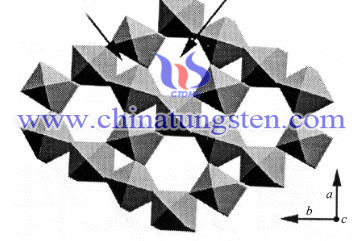 1. Hydrothermal
1. Hydrothermal
The calcination or solvent extraction remove the organic templating agent to prepared mesoporous tungsten oxide by mainly by the long-chain organic compounds as a template, a tungsten source is tungsten hexachloride. However, it is easier for tungsten oxide to collapse. And the use of an organic template was removed and extracted; it is difficult to be repeated extraction. Anhydrous ethanol as the reaction medium, a non-ionic surfactant p123 as templates, ethanol as a reactant, the use of sol-gel method, calcination at 400 ℃ 5h after preparing the mesoporous tungsten trioxide, a pore diameter of 125m / g porosity 48%.
2. Hardboard Template
We use mesoporous silica as template, make tungsten oxide remove the template with HF in its crystalline after high temperature, such methods are relatively mild conditions when removing the template, and the template is removed completely. The prepared mesoporous tungsten trioxide structure is better because the silica support as a skeleton. The template method is prepare tungsten oxide mesoporous materials that using mesoporous silica material as the template, using phosphotungstic acid as a tungsten source.
Non-mesoporous material from the synthesis, synthesis mechanism to practical applications such as synthetic technology remains immature (the collapse in the process of removing the templating agent), not green, repeatability and so on.
| Tungsten Oxide Supplier: Chinatungsten Online www.tungsten-oxide.com | Tel.: 86 592 5129696; Fax: 86 592 5129797;Email:sales@chinatungsten.com |
| Tungsten News & Prices, 3G Version: http://3g.chinatungsten.com | Molybdenum News & Molybdenum Price: http://news.molybdenum.com.cn |
Different Ball Milling Time Effect on Tungsten Copper Powder Phase II
- Details
- Category: Tungsten Information
- Published on Thursday, 31 December 2015 17:17
After high-energy ball milling, tungsten copper powder usually has lattice deformation, high-density defects and nano structure, which differ the thermodynamic and kinetic characteristics of powder system from conventional solid-state reaction and has a deviation from equilibrium properties.
It includes: 1. the continuous decrease of effective grain size and the peak movement will cause the formation of amorphous alloy; 2. the reaction component diffraction peak intensity decreased, broad-based amorphous gradually increase intensity; 3. intermediate (intermetallic compound) pre-form is further milled, resulting in an intermediate product amorphization. Overall, tungsten copper powder during the milling process after repeated deformation, cold welding distortion and tear in high energy state, also formed alternately layered structure and ultrafine microstructure, with time, each component of X-ray diffraction same position, the strength decreased.
Actually, there are several reasons: 1. High-density bit early milling wrong form, the stress field increased the elemental powders of free energy to form an alloy of the main driving forces; 2. Nano crystal formed after the high-energy ball milling with a high volume fraction of grain boundaries, the grain boundaries to store large amounts of excess enthalpy; 3. Phase boundary energy is driven alloying and system constraints in the single-phase metastable important factor; 4.Narrow composite layered structure, in a ball mill further broken into small pieces, the tip having a radius of curvature as small as 1nm, the surface tension of the solution may also be driven atoms.
Therefore, the related researchers thought atomic solid solution has two patterns, one is the crystal lattice get into solvent and resulting in lattice constant changing; and another is nano crystalline solvent provide a large number of grain boundaries, some solute atoms segregate in grain boundary, which makes the atoms in grain boundary lose the diffractive characteristic. In addition, X-ray and electron diffraction showed a single phase under construction, apparently at this time is not the solute and solvent atoms in the neighboring state, namely sub-miscible state.
| Tungsten Copper Supplier: Chinatungsten Online tungsten-copper.com | Tel.: 86 592 5129696; Fax: 86 592 5129797;Email:sales@chinatungsten.com |
| Tungsten News & Prices, 3G Version: http://3g.chinatungsten.com | Molybdenum News & Molybdenum Price: http://news.molybdenum.com.cn |
Coated Cemented Carbide Process II
- Details
- Category: Tungsten Information
- Published on Thursday, 31 December 2015 17:14
Based on traditional chemical vapor deposition (CVD) and physical vapor deposition (PVD), some new coating technologies are emerging.
3. Medium Temperature Chemical Vapor Deposition (MTCVD)
Medium temperature chemical vapor deposition (MTCVD) is a kind of new technology based on traditional CVD. It uses organic compounds with C-N atom group as the reaction of raw material, such as methyleneimine, trimethylammonium, to react with hydrogen (H2), nitrogen (N2), titanium tetrachloride (TiCl4) at 700-900℃ and form Ti(C,N) different coating layer. The biggest advantage of this method is that it can effectively curb the generation of brittle η phase, which remarkably improves the strength, wear resistance, thermal shock resistance and other comprehensive properties. However, compared with PVD process, the coating internal stress is tensile stress, which greatly increases the possibility of the cracks.
4. Sol-Gel
Sol-Gel is also called α-Al2O3, which uses Aluminum isopropoxide (C9H21AlO4) as precursor (precursor is also known as matrix, which is reactant in atmospheric chemistry) to manufacture α-Al2O3 with complete and compacted structure on the surface of tungsten carbide cutting tools matrix by sol-gel process. In addition, there are no obvious physical defects and weakening phase between coating and interface, cobalt (Co) element part of tungsten carbide diffuse in the coating layer, which improves the adhesive strength between matrix and coating layer further. Some related experiments show that the wear resistance and the lifespan of tungsten carbide cutting tools by sol-gel is much better than the uncoated.
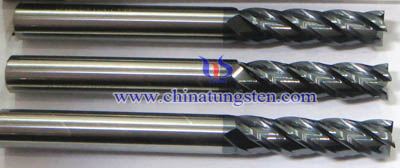
| Tungsten Carbide Supplier: Chinatungsten Online tungsten-carbide.com.cn | Tel.: 86 592 5129696; Fax: 86 592 5129797;Email:sales@chinatungsten.com |
| Tungsten News&Tungsten Prices, 3G Version: http://3g.chinatungsten.com | Molybdenum News & Molybdenum Price: http://news.molybdenum.com.cn |



 sales@chinatungsten.com
sales@chinatungsten.com